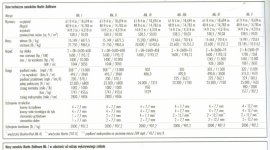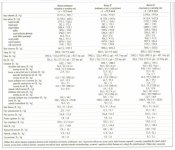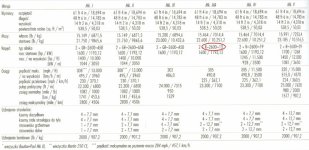Hello Aleatorylamp,
A couple days ago, you pointed out that my B-25C Mitchell AIR file did not have WEP implemented at all.
You are of course correct.
Please take a look back at Post #48.
I was stating back then that you needed to make a few choices as to what you were trying to achieve.
A Take-Off Rating IS a an emergency rating of sorts.. Typically it is of very limited duration.
I chose to ignore the time limitation on my implementation of the MitchellC AIR file, BUT
I also left the Sea Level power only at 1618 HP instead of the 1700 HP Take-Off power level.
The reason I did this is (as I have stated in many places) that I want a "Best Fit" of the power curve rather than an exact match at only one or two points. This is the reason I don't like the "1%" solution of matching performance very closely at just two points in the altitude range.
With only 1618 HP at 500 feet, the power at intermediate altitudes will still be way over 1700 HP.
Of course it will also be a touch low at Critical Altitude but the PERFORMANCE will be a closer match in most places.
You are going for 1700 HP at Sea Level and are not far off 2000 HP at intermediate altitudes which is why I think it makes sense for you to have a limit of some kind.
I figure that at worst, I am about 80 HP too high or too low.
I figure that your AIR file is more like 250 HP too high in places which is why a WEP limit makes more sense.
My goal is generally to use this game as a simulator. I want a 400 MPH Japanese Zero but also realise that it makes no sense from a historical or tactical perspectie, so I have never bothered to create it.
Just keep in mind that the Baltimore was an early war commercial bomber.
It wasn't a world beater and it wasn't a speed demon.
If it were, it may have remained in service much longer than it actually did.
- Ivan.
A couple days ago, you pointed out that my B-25C Mitchell AIR file did not have WEP implemented at all.
You are of course correct.
Please take a look back at Post #48.
I was stating back then that you needed to make a few choices as to what you were trying to achieve.
A Take-Off Rating IS a an emergency rating of sorts.. Typically it is of very limited duration.
I chose to ignore the time limitation on my implementation of the MitchellC AIR file, BUT
I also left the Sea Level power only at 1618 HP instead of the 1700 HP Take-Off power level.
The reason I did this is (as I have stated in many places) that I want a "Best Fit" of the power curve rather than an exact match at only one or two points. This is the reason I don't like the "1%" solution of matching performance very closely at just two points in the altitude range.
With only 1618 HP at 500 feet, the power at intermediate altitudes will still be way over 1700 HP.
Of course it will also be a touch low at Critical Altitude but the PERFORMANCE will be a closer match in most places.
You are going for 1700 HP at Sea Level and are not far off 2000 HP at intermediate altitudes which is why I think it makes sense for you to have a limit of some kind.
I figure that at worst, I am about 80 HP too high or too low.
I figure that your AIR file is more like 250 HP too high in places which is why a WEP limit makes more sense.
My goal is generally to use this game as a simulator. I want a 400 MPH Japanese Zero but also realise that it makes no sense from a historical or tactical perspectie, so I have never bothered to create it.
Just keep in mind that the Baltimore was an early war commercial bomber.
It wasn't a world beater and it wasn't a speed demon.
If it were, it may have remained in service much longer than it actually did.
- Ivan.



